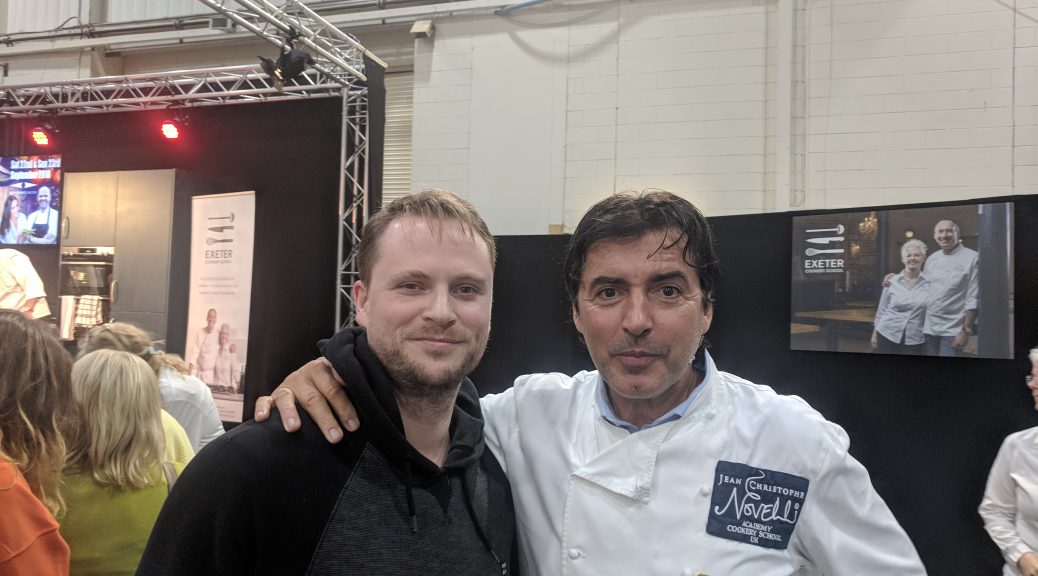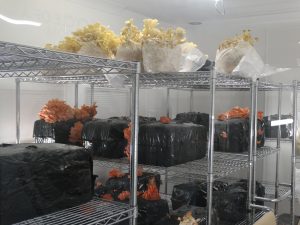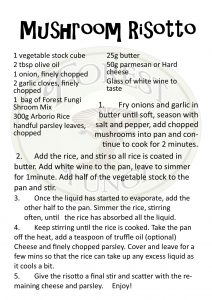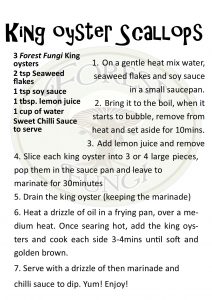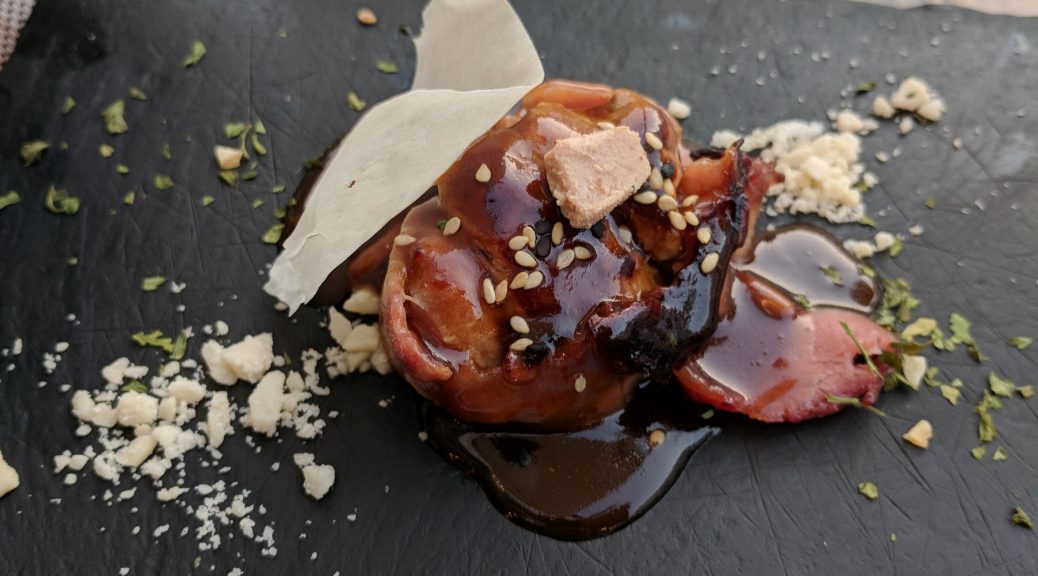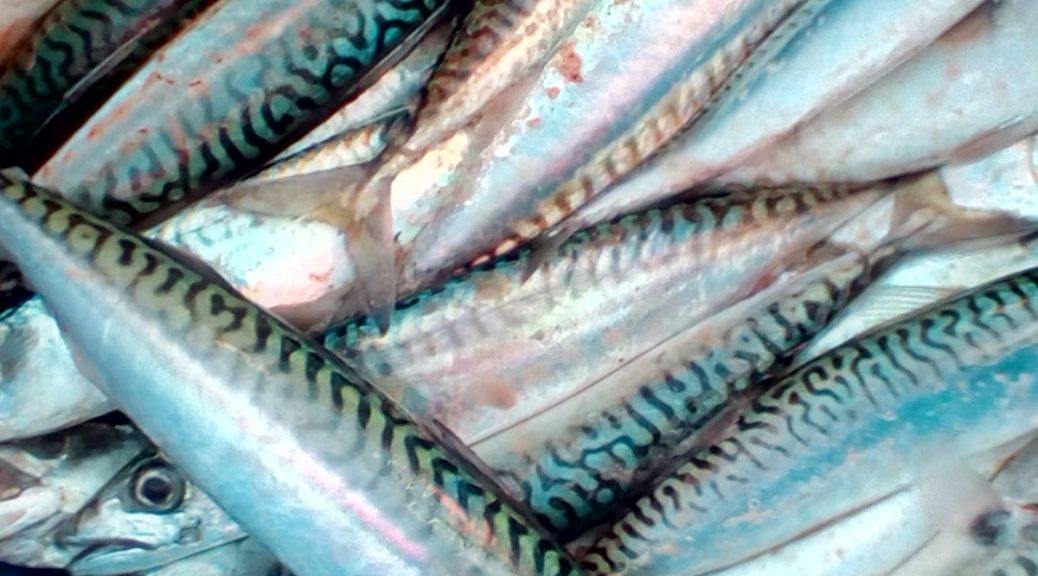
Catch and Cook Fishing Trip
At the time of writing this, ‘England’s Seafood FEAST’ is well under way. It is a two week event, running from the 22nd September until the 7th October, celebrating the wonderful array of restaurants, produce, and experiences that Torbay has to offer. When I looked at the schedule I quickly decided that the one event I had to take part in was the catch and cook fishing trip run by the Cantina Kitchen and Bar in Paignton. I have been looking for an excuse to go Mackerel fishing for about 3 years. Now was finally the time.
Bad Omens
It’s lucky I’m not superstitious as my journey from Exminster to Paignton would have probably been enough to put most people off going to sea. An accident on the main road forced me to detour though country lanes and villages, relying on the sat-nav on my phone to steer me through, while also trying desperately to get hold of the bar to let them know I was delayed. Poor signal and low battery threatened to derail me at any moment. Queues of cars squeezed past one another as we all inched our way along what we hoped was the lesser of two evils. Each time we came to a halt I peered anxiously at the ETA displayed on the screen, and watched with horror as the meeting time of 5 o’clock became a distant dream.
Upon my arrival in Paignton I ran from the car park to the harbour – desperately hoping that the boat, ‘Our Joe-L’ would still be there. To my horror, as I rounded the corner into the harbour, I spotted the boat just pulling away from the harbour wall. In a last ditch effort, I legged it towards the boat, ready to jump from the wall like a slightly asthmatic, less grumpy Liam Neeson. Fortunately, no such heroics were required (I do not have a very particular sets of skills). The boat was just picking someone up from the other side of the mouth of the harbour and came back for me moments later.
Quickly getting my breath back, and apologising to everyone for keeping them waiting, I boarded the boat and tried to put the past, profanity filled hour behind me.
Catch and Cook: Out to sea

It didn’t take long. We were blessed with the perfect evening for a boat ride, with the sun still warm but low in the sky, bathing the sea, coastline and us in a glorious golden glow. I have always been a fan of autumn, and it is because of days like this one; they feel like a reminder of the summer days that have been and gone, but more valued because of their scarcity. If we had failed to catch a single fish I don’t think I would have been disappointed. Fortunately that was not going to be a problem.
I am happy to report that I caught the first fish of the night. This was in no way due to any particular skill on my part however; I was still being shown how to cast the line in when I felt something pull on it. And my fellow fishermen and women quickly got off the mark too. Shaun, our skipper, was kept very busy helping to unhook fish, but before long everyone was mucking in and helping each other as the fish were reeled in.

Just as the sun was beginning to sink behind the headland we turned for home. We had caught more fish than we could eat in a week, but none of it was going to waste. Shaun kept some of the smaller fish to use as bait, but the rest of the catch was strung together and after reaching the harbour we strolled proudly back to the restaurant with our catch.
Dinner
On arrival at Cantina we handed the fish over to the kitchen who busied themselves with prepping dinner. We had a table reserved for us with a view of the kitchen so we were able to watch them working, while we chatted over a well-deserved drink. One of the highlights for me was the demonstration of how to prepare the fish including gutting and filleting it. I was given the opportunity to have a go myself and discovered it was actually really simple, and very satisfying to successfully remove the fillets; no more getting the fishmonger to do it for me!
This was followed by a wonderful two course meal that was included in our ticket price. To start we had a scallop, with pea puree and bacon crumb – a classic combination of flavours that was executed brilliantly: the scallop sweet and succulent, the puree velvety and the bacon crumb providing a little seasoning and a hit of umami flavour. This was followed by our freshly caught mackerel, served with horseradish mash and Swiss chard. Again the dish was beautifully balanced – the oily fish matched brilliantly with the heat of horseradish. Undoubtedly this fish tasted all the sweeter for being a part of our own catch, but the skill, care and passion of the chefs was what really made it shine.
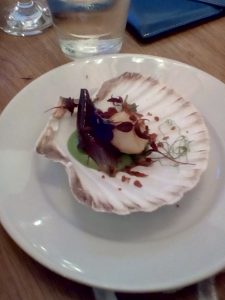
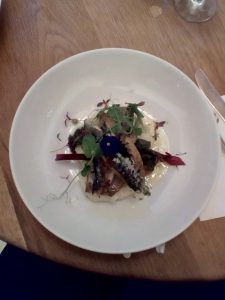
When it came time to leave I was genuinely sad to go. We were looked after in a friendly, informal but diligent way throughout, and felt like we had been not just customers for the evening, but welcomed into the community for a time. I will definitely be back.
Many thanks to Kate and all her team at Cantina for looking after us and to Shaun for his exceptional fish finding. Also a special thanks to one of my fellow fishers, Tina, who provided many of the pictures above after my phone gave up the ghost!
Links
The boat we fished from, Our Joe-l is available to charter for fishing trips, wildlife observations and more. Click here for more details
Cantina Bar and Kitchen is a gem of a place. Family and dog friendly, the atmosphere is relaxed and informal and the food is excellent. They organised the catch and cook event as part of ‘England’s seafood FEAST’ but have regular events advertised on their website. They even have their own craft gin, which I will definitely be trying next time I go. Find out more at www.cantinagoodrington.co.uk
There is still lots happenening between now and the 7th October. Find out about the other events that make up ‘England’s seafood FEAST’ by clicking here.
If you are interested in taking part in the Catch and Cook trip, it is running again on the 3rd October and details can be found here
